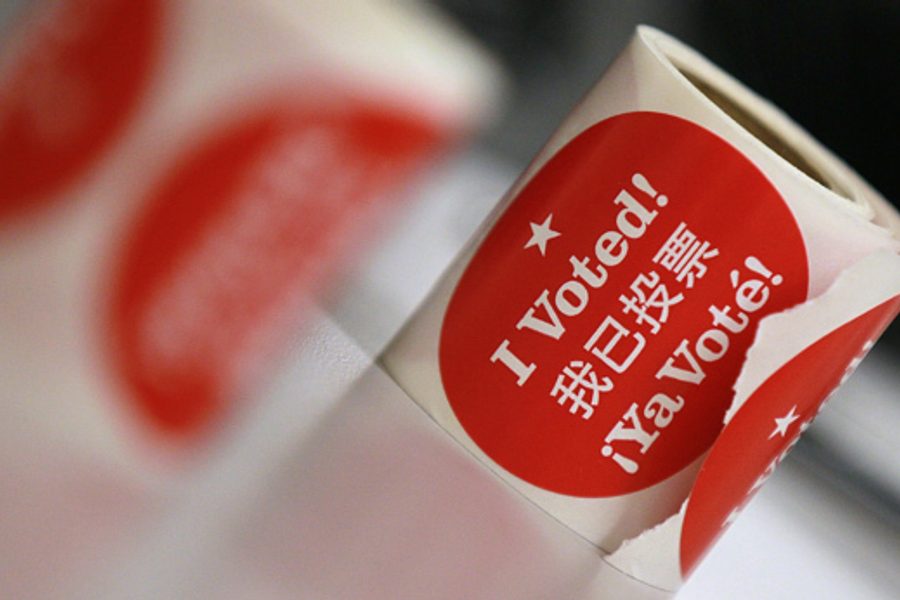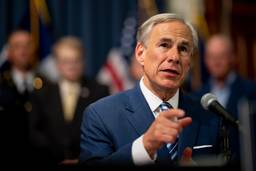
With an estimated 50 million Americans and Canadians having been left without power (and in some cases water) in August, common sense requires us to reflect on the absurdity of deregulation of public utilities. The right of utility franchise is vested in the people. We give utilities permission to operate, and enable them to set up a profit-making business in exchange for the promise of affordable and reliable service.
In 1992, investor-owned utilities pushed the Democratic House to pass HR776, which granted electric utilities broad powers. The bill was supposed to restructure the electric utility industry and thus spur competition.
But utilities used deregulation to facilitate a series of mergers that limited competition. In order to increase profits, the utilities cut costs by laying off thousands of employees, including some who maintained the generation, transmission, and distribution systems. A number of utilities stopped investing in the maintenance and repair of their own equipment in order to cut costs and enhance the value of their stock.
A case in point is FirstEnergy Corp., which was formed through a merger of utility companies that owned nuclear power plants, including The Cleveland Electric Illuminating Company (CEI).
If there was ever an example of an unholy alliance between government and industry, it is found in the government’s failure to regulate problem-plagued FirstEnergy. Now, according to published reports, the blackout that affected an estimated 50 million people most likely began when a FirstEnergy system ignored existing regulations and failed to isolate its malfunctioning grid.
I’ve been familiar with FirstEnergy and the challenge of utility monopolies for more than 30 years. Early in my career, in the ’70s, I watched CEI try to put the city’s publicly owned system, Muny Light, out of business. Muny Light competed against CEI in a third of the city and provided municipal power customers with savings on their electric bill of 20 to 30 percent. It also provided cheaper electricity for 76 city facilities and thousands of Cleveland street lights, saving taxpayers millions of dollars each year.
An antitrust review by the Justice Department revealed that CEI had committed numerous violations of federal antitrust law in its attempt to put the city utility out of business. CEI worked behind the scenes to block Muny Light from purchasing power from other power companies. CEI became the only power company Muny Light could buy electricity from, which sharply increased Muny Light’s costs.
As a result, Muny Light began to lose money and CEI used this weakened condition as evidence of the public system’s lack of viability and as proof that the only way the people of Cleveland could have reliable power was for the city to sell its electric system to CEI. Throughout this period, the Cleveland media, which received substantial advertising revenues from CEI, crusaded against the city’s ownership of a municipal electric system.
In 1976, after years of work to undermine Muny Light, CEI finally succeeded in getting the mayor and the council of Cleveland to agree to sell the utility. At that time, I was clerk of the Cleveland Municipal Court, a citywide elected office. I organized a civic campaign to save this city asset. People gathered signatures in freezing rain to block the sale. I ran for mayor of Cleveland on a promise that if elected, my first act would be to cancel the sale of Muny Light. I won the election. I canceled the sale.
The Muny Light issue came to a head on December 15, 1978, when Ohio’s largest bank, Cleveland Trust, told me that they would not renew the city’s credit on $15 million worth of loans taken out by the previous administration unless I would agree to sell Cleveland’s municipally owned utility to CEI.
Concurrently, the sale of Muny Light was being promoted by both Cleveland newspapers, virtually all of the radio and TV stations in town, the entire business community, all the banks, both political parties and several unions, as well as a majority of the Cleveland city council. I said no to the sale of Muny Light, and Cleveland Trust put the City of Cleveland into default. Later, it was revealed that Cleveland Trust and CEI had four interlocking directors, that Cleveland Trust was CEI’s bank, and that Cleveland Trust owned a substantial share of CEI stock.
Public power was saved in Cleveland. But I lost the election in 1979, and the default was the major issue.
In 1993, the City of Cleveland announced that it was expanding Muny Light, now known as Cleveland Public Power, in what was the largest expansion of any municipal electric system in America. People in Cleveland began to say that I was right not to sell their utility and I ran for the state senate in 1994 on the slogan “because he was right” with little rays of yellow light shining behind my name on my campaign signs. I was one of the few Democrats to unseat a Republican incumbent that year in a state election. In 1996, I was one of the few Democrats to unseat a Republican incumbent and win election to Congress. My campaign signs had a light bulb behind my name with the words “Light up Congress.”
Today, I’m running for president. I want to light up America, and a good place to start will be to shed light on a deregulation process that has abandoned the public interest.
In 1992, investor-owned utilities pushed the Democratic House to pass HR776, which granted electric utilities broad powers. The bill was supposed to restructure the electric utility industry and thus spur competition.
But utilities used deregulation to facilitate a series of mergers that limited competition. In order to increase profits, the utilities cut costs by laying off thousands of employees, including some who maintained the generation, transmission, and distribution systems. A number of utilities stopped investing in the maintenance and repair of their own equipment in order to cut costs and enhance the value of their stock.
A case in point is FirstEnergy Corp., which was formed through a merger of utility companies that owned nuclear power plants, including The Cleveland Electric Illuminating Company (CEI).
If there was ever an example of an unholy alliance between government and industry, it is found in the government’s failure to regulate problem-plagued FirstEnergy. Now, according to published reports, the blackout that affected an estimated 50 million people most likely began when a FirstEnergy system ignored existing regulations and failed to isolate its malfunctioning grid.
I’ve been familiar with FirstEnergy and the challenge of utility monopolies for more than 30 years. Early in my career, in the ’70s, I watched CEI try to put the city’s publicly owned system, Muny Light, out of business. Muny Light competed against CEI in a third of the city and provided municipal power customers with savings on their electric bill of 20 to 30 percent. It also provided cheaper electricity for 76 city facilities and thousands of Cleveland street lights, saving taxpayers millions of dollars each year.
An antitrust review by the Justice Department revealed that CEI had committed numerous violations of federal antitrust law in its attempt to put the city utility out of business. CEI worked behind the scenes to block Muny Light from purchasing power from other power companies. CEI became the only power company Muny Light could buy electricity from, which sharply increased Muny Light’s costs.
As a result, Muny Light began to lose money and CEI used this weakened condition as evidence of the public system’s lack of viability and as proof that the only way the people of Cleveland could have reliable power was for the city to sell its electric system to CEI. Throughout this period, the Cleveland media, which received substantial advertising revenues from CEI, crusaded against the city’s ownership of a municipal electric system.
In 1976, after years of work to undermine Muny Light, CEI finally succeeded in getting the mayor and the council of Cleveland to agree to sell the utility. At that time, I was clerk of the Cleveland Municipal Court, a citywide elected office. I organized a civic campaign to save this city asset. People gathered signatures in freezing rain to block the sale. I ran for mayor of Cleveland on a promise that if elected, my first act would be to cancel the sale of Muny Light. I won the election. I canceled the sale.
The Muny Light issue came to a head on December 15, 1978, when Ohio’s largest bank, Cleveland Trust, told me that they would not renew the city’s credit on $15 million worth of loans taken out by the previous administration unless I would agree to sell Cleveland’s municipally owned utility to CEI.
Concurrently, the sale of Muny Light was being promoted by both Cleveland newspapers, virtually all of the radio and TV stations in town, the entire business community, all the banks, both political parties and several unions, as well as a majority of the Cleveland city council. I said no to the sale of Muny Light, and Cleveland Trust put the City of Cleveland into default. Later, it was revealed that Cleveland Trust and CEI had four interlocking directors, that Cleveland Trust was CEI’s bank, and that Cleveland Trust owned a substantial share of CEI stock.
Public power was saved in Cleveland. But I lost the election in 1979, and the default was the major issue.
In 1993, the City of Cleveland announced that it was expanding Muny Light, now known as Cleveland Public Power, in what was the largest expansion of any municipal electric system in America. People in Cleveland began to say that I was right not to sell their utility and I ran for the state senate in 1994 on the slogan “because he was right” with little rays of yellow light shining behind my name on my campaign signs. I was one of the few Democrats to unseat a Republican incumbent that year in a state election. In 1996, I was one of the few Democrats to unseat a Republican incumbent and win election to Congress. My campaign signs had a light bulb behind my name with the words “Light up Congress.”
Today, I’m running for president. I want to light up America, and a good place to start will be to shed light on a deregulation process that has abandoned the public interest.
Please consider supporting our work.

I hope you found this article important. Before you leave, I want to ask you to consider supporting our work with a donation. In These Times needs readers like you to help sustain our mission. We don’t depend on—or want—corporate advertising or deep-pocketed billionaires to fund our journalism. We’re supported by you, the reader, so we can focus on covering the issues that matter most to the progressive movement without fear or compromise.
Our work isn’t hidden behind a paywall because of people like you who support our journalism. We want to keep it that way. If you value the work we do and the movements we cover, please consider donating to In These Times.




